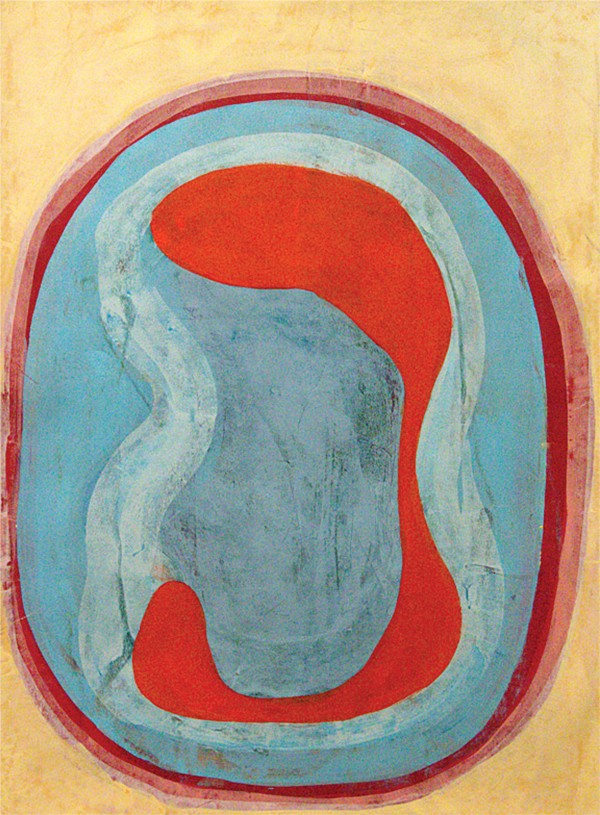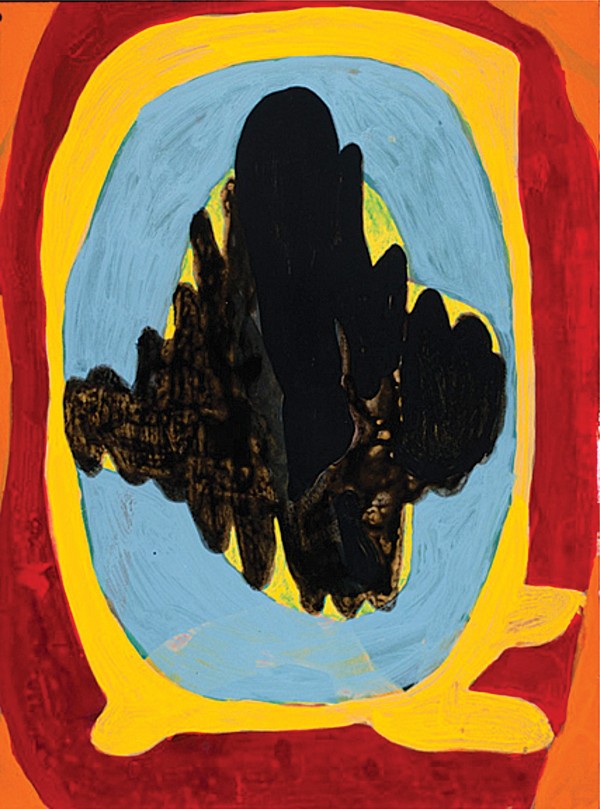Painter, Material Art Space founder, and Memphis art-scene fixture Hamlett Dobbins has been MIA around these parts lately. For the past several months, Dobbins has been in Italy, having been selected for a prestigious fellowship at the American Academy in Rome.
Dobbins returned to Memphis briefly for the opening of his show “The Attendant” at David Lusk Gallery. The show runs through April 19th.
Flyer: You went from working in a largely curatorial role in Memphis to being able to totally focus on your own work in Rome. How has this been for you? What are you working on? What are you looking forward to? Dobbins: I’ve always been a person who has done a number of things: running Material Art Space, curating and teaching at Rhodes, being a parent and a painter. I’m not a parent who teaches or a curator who paints; I see all these things as one practice. I am just doing what I need to do to be a whole person living a full life in art.
 Hamlett Dobbins
Hamlett Dobbins
That said, [it] has been interesting to just focus on painting. This is a magical place, it really is. I haven’t made any huge changes to the work I do in the studio, aside from savoring this amazing gift of time. It allows me to take more chances, reinvestigate old paths while exploring new ones. I’m looking forward to seeing the two dozen new paintings in the space at David Lusk Gallery and seeing how they interact with one another.
 Hamlett Dobbins
Hamlett Dobbins
For a painter as concerned with color, and a certain balance of colors, as you are, does being in a different country, where the light and the buildings and the countryside are different, affect what you are making? How has your practice changed in Rome? It’s very odd. I’m never really conscious of changes as they happen. Usually, it takes months or years for me to notice the subtle ebb and flow of what is happening in the studio. A few years ago, I started making acrylic drawings on paper — I think the combination of that and the light here in Rome has somehow pushed my colors into a slightly brighter, more intense spectrum.
I also notice what I see as a layering that you get in European cities with narrow streets and lots of history. It seems like you’re always looking through something to see another thing. That might be creeping into the work as well. Again, I’ll be curious to see how they look in the gallery.
 Hamlett Dobbins
Hamlett Dobbins
Likewise, your statements often make reference to your American childhood and an otherwise very American sensibility. What is it like making work very far away? The hardest part is being away from my family and friends. I have always drawn on my experiences with friends and family as the fodder for my paintings. I don’t really know about me as an American or Southern, even. That’s interesting … I’ll have to think about that more.
There are a few places in the world that geographically are just powerful — Vermont, Northern California, the American Southwest. I think Rome is like that. There is a mojo here that you can’t seem to identify, but it is real, and it is powerful, and I just try to savor it.
 Hamlett Dobbins
Hamlett Dobbins
Tell me about your show at David Lusk. It will be a strange mix of larger paintings that I did before I left and then a collection of drawings and paintings I’ve made in the past six months here in Rome.
The work is so new and still feels a little gooey and embryonic to me. I am mostly a visual thinker and often it takes months or years for me to assign words to particular experiences or feelings. I feel like this batch is more connected, but at the same time more disparate than my collections of paintings usually are. I feel like I am giving myself the liberty to wander. Being able to paint full time has been a wonderful opportunity. I know I will never have it this good again.
“The Attendant” at David Lusk through April 19th